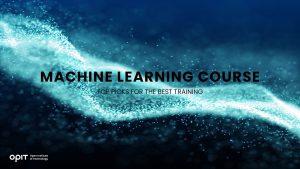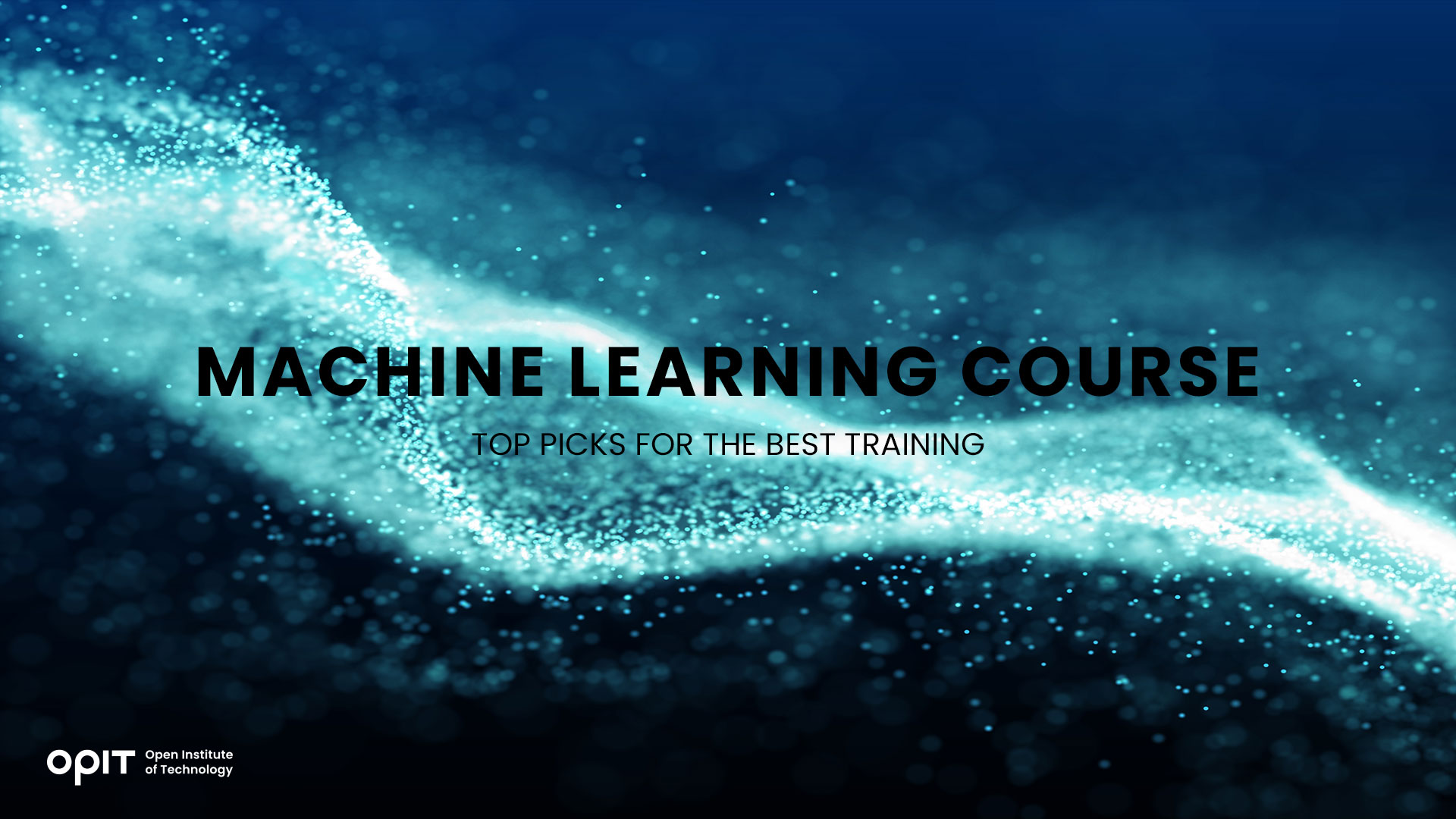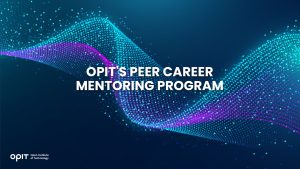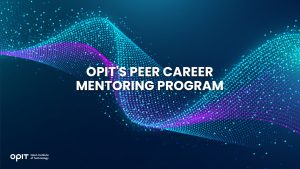

Data permeates almost every aspect of our lives. Trying to make sense of it all is a Herculean endeavor that would take humans years (if not centuries). But fear not; it’s machine learning to the rescue.
Machine learning algorithms can comb through data in a matter of days or even hours, uncovering valuable insights. Many industries have already experienced numerous benefits of these algorithms, yet the field promises to get even bigger and better.
However, we shouldn’t discard humans just yet. They still play an essential role in this process.
Machine learning algorithms couldn’t parse and interpret data correctly without human guidance. As the machine learning field grows, so will the need for skilled data scientists.
One way to acquire the skills necessary to participate in this game-changing field is by taking a machine learning course. When chosen wisely, this course will provide you with crucial theory and invaluable practice to enter the field with a bang or take your knowledge to the next level.
To ensure you choose the best machine learning course, we’ve compiled a list of our top five online picks.
Factors to Consider When Choosing a Machine Learning Course
Just like data, there are tons of courses online. Taking all of them would not be humanly possible. And frankly, not all of these courses would be worth your time. Remember these factors when browsing online learning platforms, and you’ll pick the best machine learning course each time.
Course Content and Curriculum
Shakespeare once said, “Expectation is the root of all heartache.” Believe it or not, this quote will benefit you immensely when choosing an online machine learning course.
Just because a course is named Machine Learning, it doesn’t mean it will be helpful to you. The only way to ensure the course is worth taking is to check its curriculum. Provided the description isn’t misleading, you’ll immediately know whether the course suits your educational and professional needs.
Instructor’s Expertise and Experience
Who teaches the course is as important as what is taught (if not more). Otherwise, you could just pick up a book on machine learning with the same content and try to make sense of it.
So, when a machine learning course piques your interest, check out the instructor.
Are they considered an authority in machine learning? Are they industry veterans?
A quick Google search will tell you all you need to know.
Course Duration and Flexibility
“Can I fully commit to this course?” That is the question to ask yourself before starting a machine learning course.
One look at the course’s description will tell you whether it takes an hour or months to complete. Also, you’ll immediately know if it is self-paced or fixed-timeline.
Hands-On Projects and Real-World Applications
No one can deny the value of theoretical knowledge in a machine learning course. There’s no moving on without understanding machine learning algorithms and underlying principles.
But how will you learn to use those theoretical concepts in practice? That’s right, through hands-on projects and case studies.
Ideally, your chosen course will strike the perfect balance between the two.
Course Reviews and Ratings
Sure, it’s easy to manipulate reviews and ratings. But it’s even easier to spot the fake ones. So, give the rating page a quick read-through, and you should be able to tell if the course is any good.
Certification and Accreditation
Certified and accredited courses are a must for those serious about a career in machine learning. Of course, these courses are rarely free. But if they help you land your dream job, the investment will be well worth it.
Top Picks for the Best Machine Learning Courses
We’ve also considered the above-mentioned factors when choosing our top picks for online machine learning courses. Without further ado, check out the best ones to help you learn or improve machine learning skills.
Supervised Machine Learning: Regression and Classification
This course has a lot of things going for it. It was one of the courses that popularized the entire concept of massive open online courses. And it is taught by none other than Andrew Ng, a pioneer and a visionary leader in machine learning and artificial intelligence (AI). In other words, this course is the gold standard by which every machine learning course is evaluated.
Here are all the important details at a glance:
- The course is beginner-friendly and features flexible deadlines.
- It lasts 11 weeks, each covering different machine learning techniques and models (six hours per week).
- It covers the fundamentals of machine learning and teaches you how to apply them.
- The skills you will gain include regularization to avoid overfitting, gradient descent, supervised learning, and linear regression.
- You’ll earn a certificate after completing the course.
The only thing to note about the certificate is that you must sign up for a Coursera membership ($39/€36 a month) to receive it. Otherwise, you can audit the course for free. To apply, you only need to create a Coursera account and press the “Enroll” button.
Machine Learning With Python
Another fan-favorite on Coursera, this machine learning course uses Python (SciPy and scikit-learn libraries). It’s offered by IBM, a company at the forefront of machine learning and AI research.
Here’s what you need to know about this course:
- The course is beginner-friendly but requires a great deal of calculus knowledge.
- It’s divided into four weeks, each dedicated to one broad machine learning task (regression, clustering, classification, and their implementation).
- By the end of the course, you’ll learn the theoretical fundamentals and numerous real-world applications of machine learning.
- The emphasis is placed on hands-on learning.
- A certificate is available, provided you apply for a Coursera membership ($39/€36 a month).
A Coursera account is all you need to apply for this course. You can start with a 7-day free trial. You’ll have to pay $39 (approximately €36) a month to continue learning.
Machine Learning Crash Course
Google’s Machine Learning Crash Course is ideal for those who want a fast-paced approach to learning machine learning. This intensive course uses TensorFlow, Google’s popular open-source machine learning framework.
Check out these facts to determine whether this is the best machine learning course for you:
- You can take this course as a beginner if you read some additional resources before starting.
- The course consists of 25 lessons that you can complete in 15 hours.
- Google researchers present the lessons.
- It perfectly combines theoretical video lectures (machine learning concepts and engineering), real-world case studies, and hands-on exercises.
- No certificate is issued upon completion.
Enrolling in this course is pretty straightforward – just click the “Start Crash Course” button. The course is free of charge.
Machine Learning A-Z: Hands-On Python & R in Data Science
As its name implies, this Udemy course is pretty comprehensive. Two data scientists teach it, primarily focusing on practical experiences (learning to create machine learning algorithms). If you feel like you’re missing hands-on experience in machine learning, this is the course for you.
Before applying, consider the following information:
- The course can be beginner-friendly, provided you have solid mathematics knowledge.
- It consists of video lessons and practical exercises (around 40 hours total).
- The introductory portion focuses on regression, classification, and clustering models.
- You’ll receive a certificate of completion.
To gain lifetime access to this course, you’ll need to pay $89.99 (a little over €83). Applying for it is a matter of creating an Udemy account and purchasing the course.
Machine Learning Specialization
This advanced course is the course you want to take when mastering your knowledge of machine learning. Or perhaps we should say courses since this specialization consists of six separate courses. The program was created by Andrew Ng, who also serves as an instructor (one of four total).
Here’s a quick overview of the course’s key features:
- The course isn’t beginner-friendly; it’s intermediate level and requires previous experience.
- At a pace of three hours per week, it takes approximately seven months to complete.
- The course focuses on numerous practical skills, including Python programming, linear regression, and decision trees.
- Each course includes a hands-on project.
- You’re awarded a shareable certificate upon completion of each course in the specialization.
To begin this challenging yet rewarding journey, create a Coursera account and enroll in the specialization. Then, you can choose the first course—the entire specialization costs around $350 (close to €324).
Additional Resources for Learning Machine Learning
The more you immerse yourself in machine learning, the faster you advance. So, besides attending a machine learning course, consider exploring additional learning resources, such as:
- Books and e-books. Books on machine learning provide in-depth explanations of the topic. So, if you feel that a course’s content is insufficient, this is the path for you. Check out “Introduction to Statistical Learning” (theory-focused) and “Hands-On Machine Learning With Scikit-Learn and TensorFlow.”
- Online tutorials and blogs. Due to the complexity of the field, only a few bloggers post consistently on the topic. Still, blogs like Christopher Olah and Machine Learning Mastery are updated relatively frequently and contain plenty of fascinating information.
- Podcasts and YouTube channels. Keep up with the latest news in machine learning with podcasts like “This Week in Machine Learning and AI.” YouTube channels like Stanford Online also offer a treasure trove of valuable information on the topic.
- Networking and community involvement. You can learn much about machine learning by sharing insights and ideas with like-minded individuals. Connect with the machine learning community through courses or conferences (AI & Big Data Expo World Series, MLconf).
Master Machine Learning to Transform Your Future
An online machine learning course allows you to learn directly from the best of the best, whether individuals like Andrew Ng or prominent organizations like Google and IBM. Once you start this exciting journey, you probably won’t want to stop. And considering all the career prospects machine learning can bring, why would you?
If you see a future in computer science, consider pursuing a degree from the Open Institute of Technology. Besides machine learning, you’ll acquire all the necessary skills to succeed in this ever-evolving and lucrative field.
Related posts

Source:
- Raconteur, published on November 06th, 2025
Many firms have conducted successful Artificial Intelligence (AI) pilot projects, but scaling them across departments and workflows remains a challenge. Inference costs, data silos, talent gaps and poor alignment with business strategy are just some of the issues that leave organisations trapped in pilot purgatory. This inability to scale successful experiments means AI’s potential for improving enterprise efficiency, decision-making and innovation isn’t fully realised. So what’s the solution?
Although it’s not a magic bullet, an AI operating model is really the foundation for scaling pilot projects up to enterprise-wide deployments. Essentially it’s a structured framework that defines how the organisation develops, deploys and governs AI. By bringing together infrastructure, data, people, and governance in a flexible and secure way, it ensures that AI delivers value at scale while remaining ethical and compliant.
“A successful AI proof-of-concept is like building a single race car that can go fast,” says Professor Yu Xiong, chair of business analytics at the UK-based Surrey Business School. “An efficient AI technology operations model, however, is the entire system – the processes, tools, and team structures – for continuously manufacturing, maintaining, and safely operating an entire fleet of cars.”
But while the importance of this framework is clear, how should enterprises establish and embed it?
“It begins with a clear strategy that defines objectives, desired outcomes, and measurable success criteria, such as model performance, bias detection, and regulatory compliance metrics,” says Professor Azadeh Haratiannezhadi, co-founder of generative AI company Taktify and professor of generative AI in cybersecurity at OPIT – the Open Institute of Technology.
Platforms, tools and MLOps pipelines that enable models to be deployed, monitored and scaled in a safe and efficient way are also essential in practical terms.
“Tools and infrastructure must also be selected with transparency, cost, and governance in mind,” says Efrain Ruh, continental chief technology officer for Europe at Digitate. “Crucially, organisations need to continuously monitor the evolving AI landscape and adapt their models to new capabilities and market offerings.”
An open approach
The most effective AI operating models are also founded on openness, interoperability and modularity. Open source platforms and tools provide greater control over data, deployment environments and costs, for example. These characteristics can help enterprises to avoid vendor lock-in, successfully align AI to business culture and values, and embed it safely into cross-department workflows.
“Modularity and platformisation…avoids building isolated ‘silos’ for each project,” explains professor Xiong. “Instead, it provides a shared, reusable ‘AI platform’ that integrates toolchains for data preparation, model training, deployment, monitoring, and retraining. This drastically improves efficiency and reduces the cost of redundant work.”
A strong data strategy is equally vital for ensuring high-quality performance and reducing bias. Ideally, the AI operating model should be cloud and LLM agnostic too.
“This allows organisations to coordinate and orchestrate AI agents from various sources, whether that’s internal or 3rd party,” says Babak Hodjat, global chief technology officer of AI at Cognizant. “The interoperability also means businesses can adopt an agile iterative process for AI projects that is guided by measuring efficiency, productivity, and quality gains, while guaranteeing trust and safety are built into all elements of design and implementation.”
A robust AI operating model should feature clear objectives for compliance, security and data privacy, as well as accountability structures. Richard Corbridge, chief information officer of Segro, advises organisations to: “Start small with well-scoped pilots that solve real pain points, then bake in repeatable patterns, data contracts, test harnesses, explainability checks and rollback plans, so learning can be scaled without multiplying risk. If you don’t codify how models are approved, deployed, monitored and retired, you won’t get past pilot purgatory.”
Of course, technology alone can’t drive successful AI adoption at scale: the right skills and culture are also essential for embedding AI across the enterprise.
“Multidisciplinary teams that combine technical expertise in AI, security, and governance with deep business knowledge create a foundation for sustainable adoption,” says Professor Haratiannezhadi. “Ongoing training ensures staff acquire advanced AI skills while understanding associated risks and responsibilities.”
Ultimately, an AI operating model is the playbook that enables an enterprise to use AI responsibly and effectively at scale. By drawing together governance, technological infrastructure, cultural change and open collaboration, it supports the shift from isolated experiments to the kind of sustainable AI capability that can drive competitive advantage.
In other words, it’s the foundation for turning ambition into reality, and finally escaping pilot purgatory for good.

The Open Institute of Technology (OPIT) is the perfect place for those looking to master the core skills and gain the fundamental knowledge they need to enter the exciting and dynamic environment of the tech industry. While OPIT’s various degrees and courses unlock the doors to numerous careers, students may not know exactly which line of work they wish to enter, or how, exactly, to take the next steps.
That’s why, as well as providing exceptional online education in fields like Responsible AI, Computer Science, and Digital Business, OPIT also offers an array of career-related services, like the Peer Career Mentoring Program. Designed to provide the expert advice and support students need, this program helps students and alumni gain inspiration and insight to map out their future careers.
Introducing the OPIT Peer Career Mentoring Program
As the name implies, OPIT’s Peer Career Mentoring Program is about connecting students and alumni with experienced peers to provide insights, guidance, and mentorship and support their next steps on both a personal and professional level.
It provides a highly supportive and empowering space in which current and former learners can receive career-related advice and guidance, harnessing the rich and varied experiences of the OPIT community to accelerate growth and development.
Meet the Mentors
Plenty of experienced, expert mentors have already signed up to play their part in the Peer Career Mentoring Program at OPIT. They include managers, analysts, researchers, and more, all ready and eager to share the benefits of their experience and their unique perspectives on the tech industry, careers in tech, and the educational experience at OPIT.
Examples include:
- Marco Lorenzi: Having graduated from the MSc in Applied Data Science and AI program at OPIT, Marco has since progressed to a role as a Prompt Engineer at RWS Group and is passionate about supporting younger learners as they take their first steps into the workforce or seek career evolution.
- Antonio Amendolagine: Antonio graduated from the OPIT MSc in Applied Data Science and AI and currently works as a Product Marketing and CRM Manager with MER MEC SpA, focusing on international B2B businesses. Like other mentors in the program, he enjoys helping students feel more confident about achieving their future aims.
- Asya Mantovani: Asya took the MSc in Responsible AI program at OPIT before taking the next steps in her career as a Software Engineer with Accenture, one of the largest IT companies in the world, and a trusted partner of the institute. With a firm belief in knowledge-sharing and mutual support, she’s eager to help students progress and succeed.
The Value of the Peer Mentoring Program
The OPIT Peer Career Mentoring Program is an invaluable source of support, inspiration, motivation, and guidance for the many students and graduates of OPIT who feel the need for a helping hand or guiding light to help them find the way or make the right decisions moving forward. It’s a program built around the sharing of wisdom, skills, and insights, designed to empower all who take part.
Every student is different. Some have very clear, fixed, and firm objectives in mind for their futures. Others may have a slightly more vague outline of where they want to go and what they want to do. Others live more in the moment, focusing purely on the here and now, but not thinking too far ahead. All of these different types of people may need guidance and support from time to time, and peer mentoring provides that.
This program is also just one of many ways in which OPIT bridges the gaps between learners around the world, creating a whole community of students and educators, linked together by their shared passions for technology and development. So, even though you may study remotely at OPIT, you never need to feel alone or isolated from your peers.
Additional Career Services Offered by OPIT
The Peer Career Mentoring Program is just one part of the larger array of career services that students enjoy at the Open Institute of Technology.
- Career Coaching and Support: Students can schedule one-to-one sessions with the institute’s experts to receive insightful feedback, flexibly customized to their exact needs and situation. They can request resume audits, hone their interview skills, and develop action plans for the future, all with the help of experienced, expert coaches.
- Resource Hub: Maybe you need help differentiating between various career paths, or seeing where your degree might take you. Or you need a bit of assistance in handling the challenges of the job-hunting process. Either way, the OPIT Resource Hub contains the in-depth guides you need to get ahead and gain practical skills to confidently move forward.
- Career Events: Regularly, OPIT hosts online career event sessions with industry experts and leaders as guest speakers about the topics that most interest today’s tech students and graduates. You can join workshops to sharpen your skills and become a better prospect in the job market, or just listen to the lessons and insights of the pros.
- Internship Opportunities: There are few better ways to begin your professional journey than an internship at a top-tier company. OPIT unlocks the doors to numerous internship roles with trusted institute partners, as well as additional professional and project opportunities where you can get hands-on work experience at a high level.
In addition to the above, OPIT also teams up with an array of leading organizations around the world, including some of the biggest names, including AWS, Accenture, and Hype. Through this network of trust, OPIT facilitates students’ steps into the world of work.
Start Your Study Journey Today
As well as the Peer Career Mentoring Program, OPIT provides numerous other exciting advantages for those who enroll, including progressive assessments, round-the-clock support, affordable rates, and a team of international professors from top universities with real-world experience in technology. In short, it’s the perfect place to push forward and get the knowledge you need to succeed.
So, if you’re eager to become a tech leader of tomorrow, learn more about OPIT today.
Have questions?
Visit our FAQ page or get in touch with us!
Write us at +39 335 576 0263
Get in touch at hello@opit.com
Talk to one of our Study Advisors
We are international
We can speak in:


